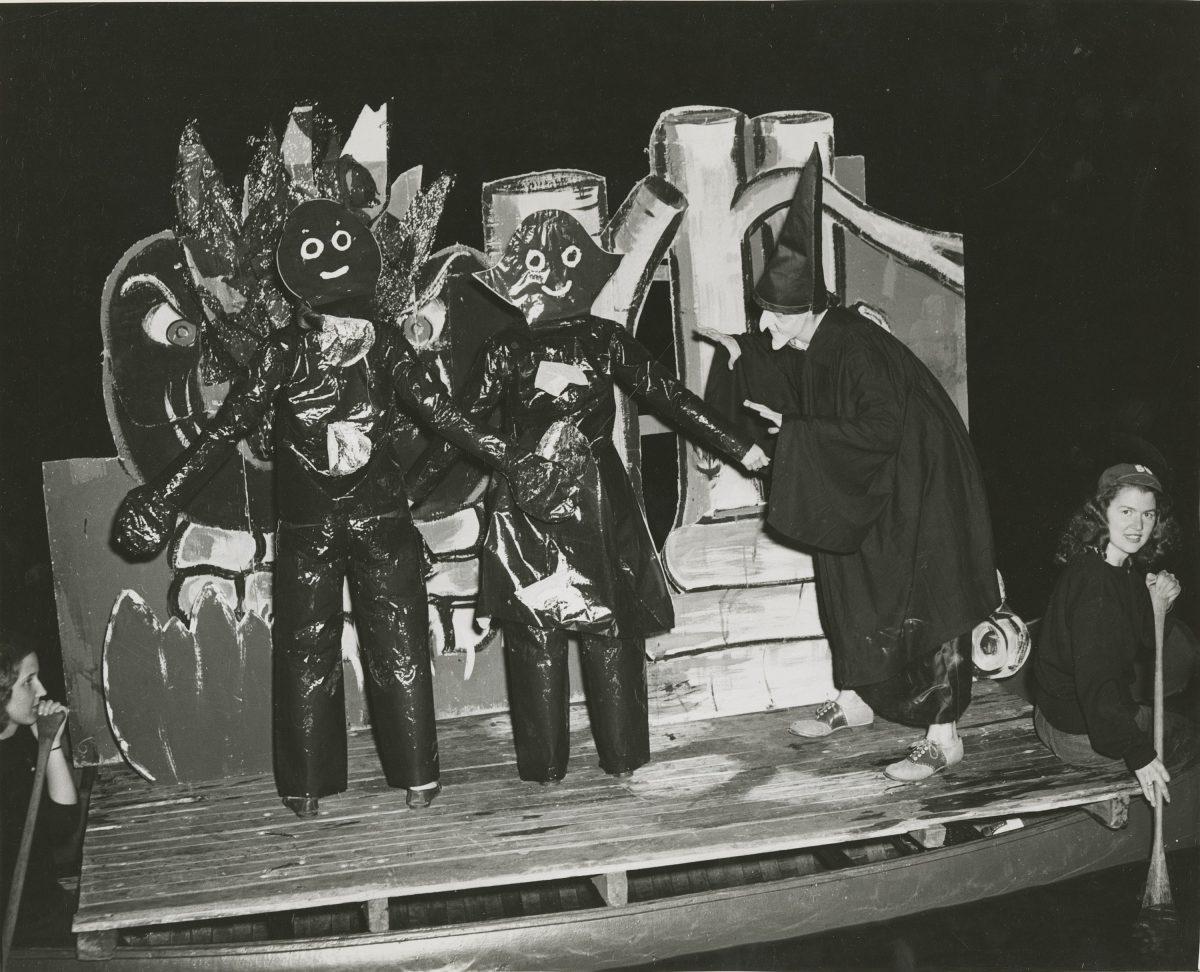When you try to imagine the previous traditions of Wellesley College, what do you see? Students in antiquated dresses softly singing hymns? Orderly processions of students around our beloved Lake Waban? You would be wrong.
After exploring some of Wellesley’s long lost traditions, it has become clear that our fore-sibs were well-versed in creating lively, memorable, rowdy ceremonies that reflected the Wellesley character of empowerment and determination. Our fore-sibs put us to shame in the traditions department and we need to amp up our school spirit and friendly competition between classes — otherwise the ghosts of perished Wellesley alumnae found around campus will incessantly haunt us.
Although Tree Day still occurs in our sophomore year, examining its roots produces fascinating results about the character of past Wellesley students. The tradition started in 1877 after Wellesley students wanted to emulate a tradition of tree-planting found at Vassar College. Henry Fowle Durant, founder of Wellesley College, helped the historically women’s institution reclaim the tradition as its own, proposing that students plant a tree as first years to watch themselves grow as the tree does. Students took a few days to prepare for the festivities with music, poems and addresses. When the day came, the sophomores greatly outdid the first years — there were only two classes at the time — with a printed program and sophisticated costumes. In later years, the tradition was held on Severance Green, starting with a procession of classes that, upon forming a W, would sing and partake in festivities for an audience of special guests and family members. At the end of the event, students would race to the new class tree. Another notable characteristic of Tree Day was that the first-year class would reveal its color — back then, the students decided their class color, as they were not fated to red, green, purple or yellow as we are today — to the rest of the school. Some upperclassmen used “questionable methods” to figure out the first years’ color in advance. Tree Day came to a temporary end after the 1968 celebration due to its seeming antiquity.
Tree Day may still be around, but Float Night has floated away from our school’s consciousness. A tradition that started in the 1880s, Float Night involved each class crew showcasing songs and dances on the lake. After singing individual class songs for a while, the fleets would come together to float and sing side by side. Simultaneously, other students would parade around the lake, whose trees were adorned with Japanese lanterns. At the event’s peak, it drew almost 7000 guests, including the governor of Massachusetts and the mayor of Boston. There were fireworks as well, though the tradition was promptly discontinued when a man who claimed to be an expert on fireworks set them off dangerously close to Claflin and Tower Court. Float Night had its critics for being boring, but it persisted until 1948, when it was abandoned due to several consecutive years of bad weather in a row. However, parts of the tradition persisted, in the form of class crew races.
While Tree Day and Float Night were openly celebrated by most of the school, a tradition that was shrouded in secrecy was Forensic Burning. Starting in 1889, students took out their frustrations on their senior theses by drowning them in the lake — a necessary resort because students were initially prohibited from using fire. That rule soon changed, and the tradition of burning school work in the woods took root. The rites performed by students in the woods were never revealed, but everyone could witness the mournful procession around campus. Even when forensic and debate courses were no longer required for students, the tradition continued and adapted to burning finished coursework for other subjects. Students dressed up as “sheeted ghosts” and processed with candles while singing in Latin, formed a W and stuck lights in the ground. Forensic Burning came to an end after the last ceremony of 1916.
The last series of lost traditions built upon the theatrical roots of Tree Day and Float Night: the production of the Faculty and Junior Shows and the Greek Play. From 1944 to 1960, a Faculty Show was produced every year, in which faculty members mocked themselves and students. Some particularly outrageous shows involved the joining together of male faculty members to perform a men’s ballet and a Latin professor who would perform long scenes while in a headstand. The students also participated in theatrical traditions with the Junior Show and the Greek Play. Starting in 1936, the junior class would put on an original musical show, some of which had clever names such as “The Taming of the Few” and “One Knight’s Stand.” The shows would often intertwine social issues with comedy and college-specific issues. Students at the time reported that the production of the play fostered enthusiastic connections among the junior class. Although the original form of the Junior Show no longer exists today, its roots are currently manifested in talent shows and culture shows. Finally, the Greek Play, which began in 1934, would occasionally occur if Greek students felt passionate enough about putting on a play. Although the plays were in Greek, students who did not speak Greek also regarded the performances highly, as they were able to grasp the plot using visual cues.
Although traditions such as Forensic Burning and Float Day are lost to us today, we have more in common with past Wellesley students than we realize. According to “Traditions of Wellesley,” published in 1916 by the Wellesley College Alumnae Association, “One sophomore class was so distraught by having mathematics required of them that they burned their textbooks.” For students averse to STEM courses, this tradition of the past does not seem obsolete at all — they may even feel inspired to revive the rites.






